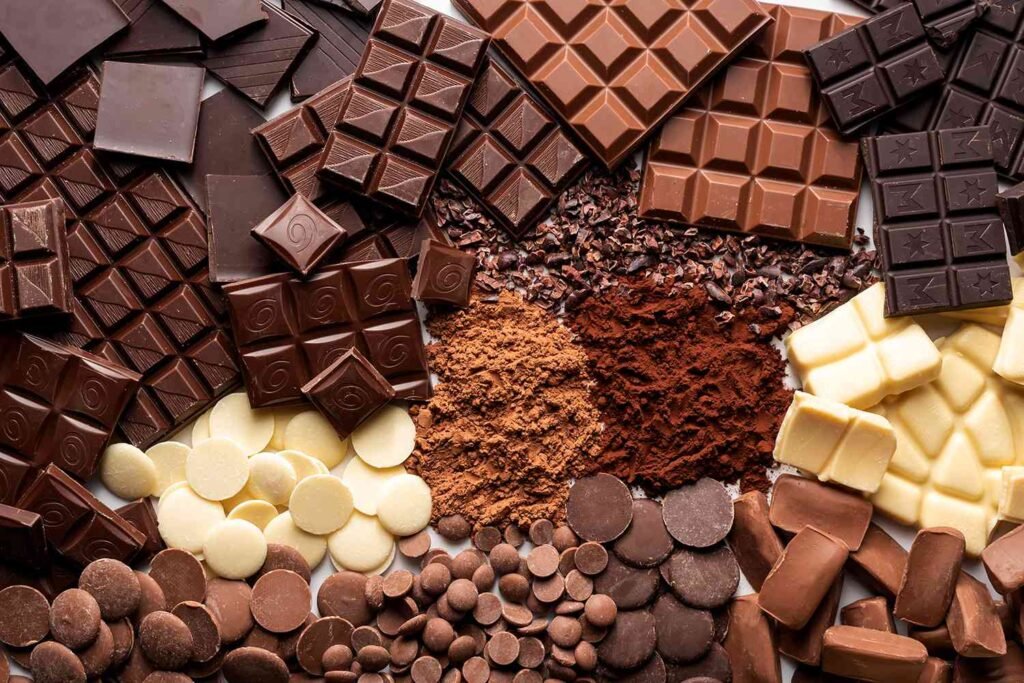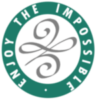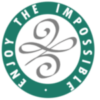
NLP and chocolate
🖊Batoul Khalifeh
|

Chocolate is one of those things that make all the pain, and the worries go away to a degree that you numbly lose consciousness while it smoothly opens your appetite and makes it harder for you to take a moment, control yourself and eat wisely.
As most humanity craves food generally and chocolate particularly, it would be curiously interesting to understand what’s behind all the passionate longings for this taste. Right?!
Well, one of the reasons we can primarily start with, is simply because it makes us feel good and happy, which can actually lower your levels of stress as well! Surveys show that some have described the sensation of chocolate melting on the tongue to be much more fulfilling than a kiss.
As most humanity craves food generally and chocolate particularly, it would be curiously interesting to understand what’s behind all the passionate longings for this taste. Right?!
Well, one of the reasons we can primarily start with, is simply because it makes us feel good and happy, which can actually lower your levels of stress as well! Surveys show that some have described the sensation of chocolate melting on the tongue to be much more fulfilling than a kiss.
So why do we love chocolate so much?
The ‘feelings’ we get when we consume chocolate are naturally there because our brain releases dopamine and other ‘positive’ chemicals.
While Chocolate contains some magnesium which women tend to be deficient in, This could logically explain why women seem to crave chocolate more than men. Magnesium is an essential mineral in the body that helps with muscle and nerve function, hormone production, and blood clotting. It also helps regulate blood pressure, stabilizes moods, and improves sleep.
While many people are not getting enough magnesium from their diet, eating leafy greens like spinach, kale, and beet greens could be your substitute if you can’t control your wild appetite for chocolate. In addition to raising the dopamine levels in our blood, Chocolate is a strong provider of endorphins. The body’s natural painkillers. The group of hormones relieves pain and creates a general feeling of well-being at the same time.
In fact, we naturally release endorphins when we laugh, fall in love, have sex, or even eat a delicious meal or snack!
Not to Forget, chocolate is made from cocoa beans, containing an interesting chemical called phenylethylamine which by nature is addictive.
While Chocolate contains some magnesium which women tend to be deficient in, This could logically explain why women seem to crave chocolate more than men. Magnesium is an essential mineral in the body that helps with muscle and nerve function, hormone production, and blood clotting. It also helps regulate blood pressure, stabilizes moods, and improves sleep.
While many people are not getting enough magnesium from their diet, eating leafy greens like spinach, kale, and beet greens could be your substitute if you can’t control your wild appetite for chocolate. In addition to raising the dopamine levels in our blood, Chocolate is a strong provider of endorphins. The body’s natural painkillers. The group of hormones relieves pain and creates a general feeling of well-being at the same time.
In fact, we naturally release endorphins when we laugh, fall in love, have sex, or even eat a delicious meal or snack!
Not to Forget, chocolate is made from cocoa beans, containing an interesting chemical called phenylethylamine which by nature is addictive.
Did you get enough reasons so far to understand why we crave chocolate?!
You might have a sweet tooth and love the taste of chocolate, but you should not overeat it. Chocolate is a great energy source, yet it can easily lead to weight gain if consumed in excessive amounts.
Now the important question comes, do you think you might be a “chocoholic”? Does it seem that whenever you start to eat chocolate you find it hard, if not impossible, to stop after one piece? Does eating chocolate affect your mood? If you think you are, then here comes the role of NLP.
Now the important question comes, do you think you might be a “chocoholic”? Does it seem that whenever you start to eat chocolate you find it hard, if not impossible, to stop after one piece? Does eating chocolate affect your mood? If you think you are, then here comes the role of NLP.
NLP can help you enjoy eating chocolate without overindulging!
Many people are surprised to find out that the results of NLP are fast and sometimes immediate. This is because the various techniques of this methodology allow one to access the subconscious mind and rewrite the underlying script of one’s life.
This biological process of re-routing the neural pathways of the brain and changing the brain’s structure is called neuroplasticity. NLP allows a person to change the structure of their brain and therefore how they perceive life, for good.
This system includes all our thoughts, traits, and habits including eating chocolate or any unhealthy food by applying several methods and techniques such as the Godiva chocolate created by Richard Bandler, the co-founder of NLP.
This biological process of re-routing the neural pathways of the brain and changing the brain’s structure is called neuroplasticity. NLP allows a person to change the structure of their brain and therefore how they perceive life, for good.
This system includes all our thoughts, traits, and habits including eating chocolate or any unhealthy food by applying several methods and techniques such as the Godiva chocolate created by Richard Bandler, the co-founder of NLP.

For a chocoholic, the very words Godiva chocolate are synonymous with the finest Belgian chocolate available.
And, Is there anything that could be quite so irresistible or compelling?
In order to create positive change in your life, two things must be considered – the process or habits by which something is accomplished, and the identity required to make such achievements.
And, Is there anything that could be quite so irresistible or compelling?
In order to create positive change in your life, two things must be considered – the process or habits by which something is accomplished, and the identity required to make such achievements.
For lasting change, one must change the process (the action steps taken) AND change how one thinks about themselves (their identity) until both align with the desired outcome.
In short, you must adopt a new identity in order to take new actions and create positive habits.
Of course, as with any new skill or task, practice is crucial as the brain learns through repetition. On a biological level, practicing a skill or task over and over is what creates and strengthens your new neural pathways. It is also a repetition of the new pattern that thereby weakens the old ones until they no longer exist.
By practicing a new skill or task, you are physically restructuring your brain to support the new behavior. It works the same for the body within the muscles. You are teaching your body and brain what to do and when.
Of course, as with any new skill or task, practice is crucial as the brain learns through repetition. On a biological level, practicing a skill or task over and over is what creates and strengthens your new neural pathways. It is also a repetition of the new pattern that thereby weakens the old ones until they no longer exist.
By practicing a new skill or task, you are physically restructuring your brain to support the new behavior. It works the same for the body within the muscles. You are teaching your body and brain what to do and when.
Godiva Chocolate Pattern:
The Godiva chocolate pattern helps you find a way to notice your craving and redirect its path into a healthier habit. Indeed, at first glance, this Chocolate Meditation sounds a little frivolous and self-indulgent. While it is certainly enjoyable, it also has a deeper value, as it helps you reconnect with your senses, which is of vital importance in our fast-paced and frantic world.
Connecting with your senses is one of the core benefits of Mindfulness that aids this process is of immense value. On the whole, compulsive behavior is something best avoided as it tends to be uncontrollable.
However, the drive associated with a compulsion is something that can be very useful when attempting to motivate oneself to accomplish a goal.
Connecting with your senses is one of the core benefits of Mindfulness that aids this process is of immense value. On the whole, compulsive behavior is something best avoided as it tends to be uncontrollable.
However, the drive associated with a compulsion is something that can be very useful when attempting to motivate oneself to accomplish a goal.
This NLP technique, therefore, is about how to motivate yourself or your client who has no enthusiasm at all for the task she should be about to undertake.
For more details check our NLP Courses NOW!

